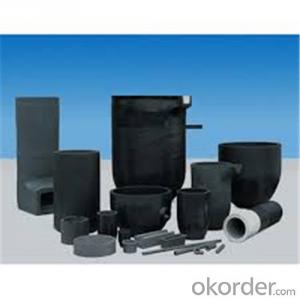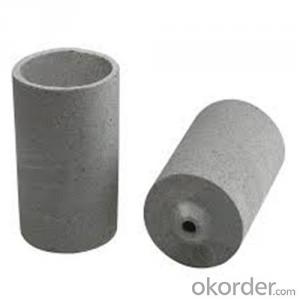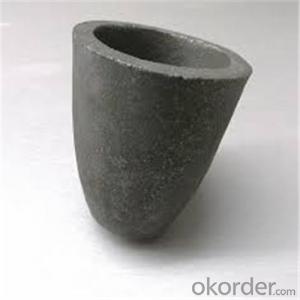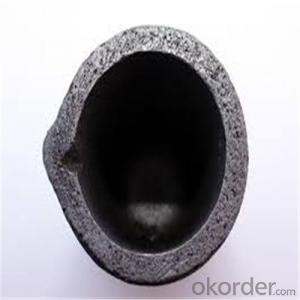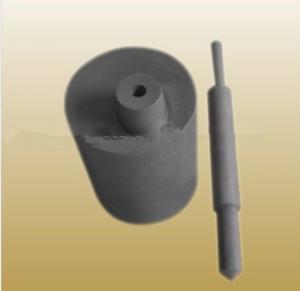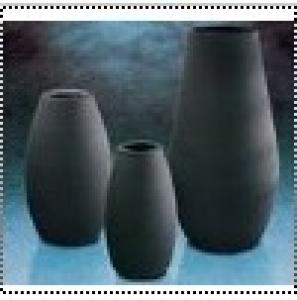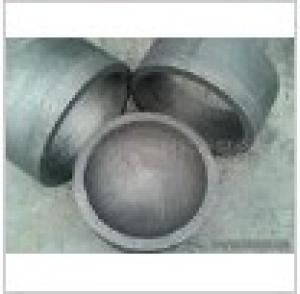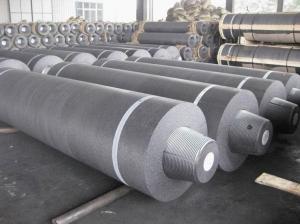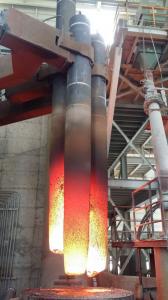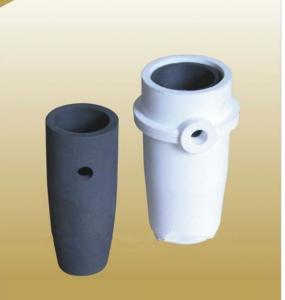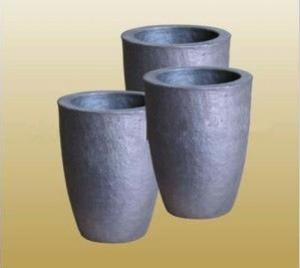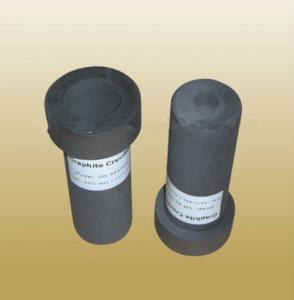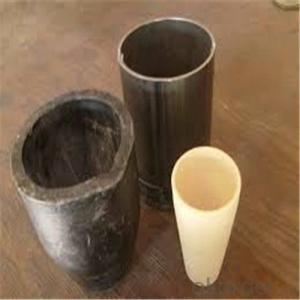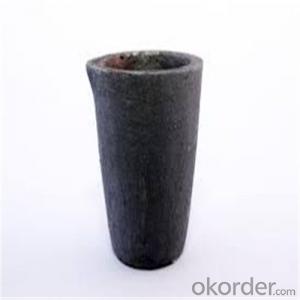Refractory Crucibles Sic Crucible For Brass/Aluminum
- Loading Port:
- Shanghai
- Payment Terms:
- TT OR LC
- Min Order Qty:
- 1 pc
- Supply Capability:
- 1000 pc/month
OKorder Service Pledge
OKorder Financial Service
You Might Also Like
Quick Details for Refractory Crucibles Sic Crucible For Melting Copper/Brass/Aluminum
| Type: | High Strength, graphite crucible crucible | Application: | melting metal | Height: | as your requirements |
| Composition: | High Pure | Top Diameter: | 10-600mm | Bottom Diameter: | 10-1000mm |
| Place of Origin: | China (Mainland) | Brand Name: | Model Number: | ||
| Color: | Black grey | Si3N4%: | 5min | Fe2O3%: | 0.7max |
| C%: | 30-45 | Apparent porosity: | 30max | Refractoriness: | 1680 |
| Bulk Density: | 1.71min | Using life: | >5000 hours | MAX temperature: | 1600c |
Packaging & Delivery
| Packaging Details: | Seaworty packing or as per customer's detail requirement of graphite crucible. |
| Delivery Detail: | within 20-30 days after confirm order of graphite cru |
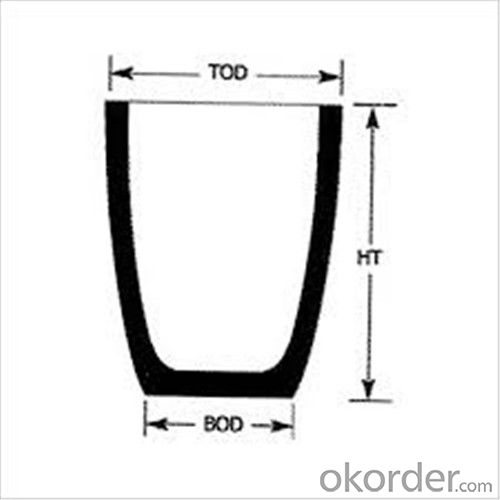

Refractory Crucibles Sic Crucible For Melting Copper/Brass/Aluminum
Physicochemical Properties
Type of Crucible | Type S | Type D |
Carbon Content/% | ≥38 | ≥45 |
Bulk Density/(g/cm3) | ≥1.70 | ≥1.85 |
Apparent Porosity/% | ≤29 | ≤21 |
Compression Strength/MPa | ≥20 | ≥25 |
Refractoriness/°C | ≥1400 | ≥1400 |
Type S: Clay graphite crucible
Type D: Isostatic pressing graphite crucible
Cited from CNS China National Standard of Graphite Crucible, which is solely drifted by TIANFU company.
Content Composition
C% | Sic% | AL2O3% | SIO2% |
45%-50% | 20%-30% | 10%-12% | 15-25% |
Packaging & Shipping
Package: Wooden case and wooden pallet or pack as customer's requirement of graphite crucible.
Delivery time: depend on distance, usually 20 days to 50days after deposit of graphite crucible.
We can supply the products according to customer's drawings, samples and performance requirement.
Other Products

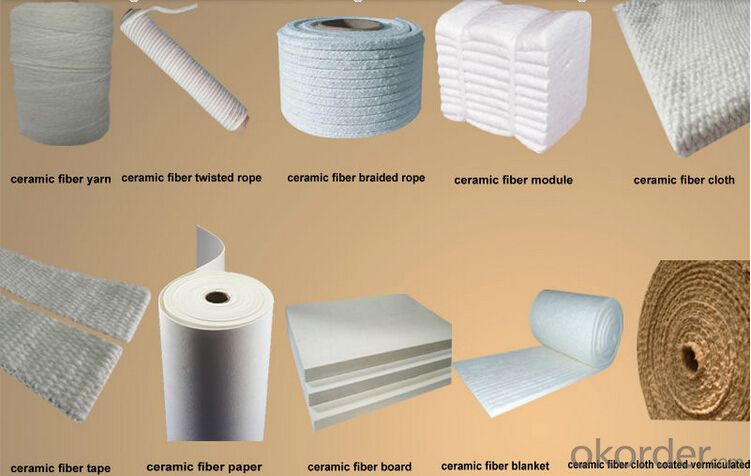
FAQ
1.What's your MOQ?
We will indicate the MOQ for each item in the quotation list. We accept the sample and trail order.
2.Can I negotiate the Prices?
Sure, we may consider discounts for bulk order of products.
3.How long will it take to complete my order?
For the stock items, we can arrange the shippment within 2~3days after received your payment. For the customized items, we will indicate the delivery time in the quotation list.
4.Can you give warranty of your products?
Yes, we extend a 100% satifisfaction guarantee on all items. Please feel free to provide timely feedback if you're not satisfied with N&D's Quality and Service. For the overseas orders, if there is a quality problem, please kindly to provide the picturers to show the problem by e-mail. We will provide the replacements to you at our cost according to actual conditions.
Welcome to visit our factory.
- Q:How do you ensure proper sealing of a graphite crucible?
- To ensure proper sealing of a graphite crucible, it is important to follow these steps: 1. Clean the crucible: Thoroughly clean the graphite crucible using a brush or cloth to remove any debris or impurities that could affect the seal. 2. Inspect the crucible: Carefully examine the crucible for any cracks, chips, or other damages that could compromise the seal. If any defects are found, it is best to replace the crucible. 3. Apply a sealant: Use a suitable sealant, such as graphite powder or a high-temperature adhesive, to create a tight seal between the lid and the crucible. Apply the sealant evenly along the contact surface to ensure a proper bond. 4. Secure the lid: Place the lid on the crucible and make sure it aligns correctly. Apply gentle pressure to ensure a tight fit. If the crucible has clamps or screws, tighten them according to the manufacturer's instructions. 5. Preheat the crucible: Before using the crucible, it is essential to preheat it gradually to allow the sealant to cure properly. Follow the recommended preheating process provided by the crucible manufacturer. By following these steps, you can ensure the proper sealing of a graphite crucible, minimizing the risk of any leaks or contamination during its use.
- Q:Is graphite crucible resistant to hydrofluoric acid?
- The graphite crucible has a maximum temperature of 1800 degrees Celsius and can be used for a long time! But generally graphite crucibles are used below 1300 degrees celsius!
- Q:Are there any specific cleaning agents or methods recommended for graphite crucibles?
- There exist specific cleaning agents and techniques that are suggested for the purpose of cleaning graphite crucibles. Graphite crucibles are commonly employed in applications involving high temperatures, such as metal melting, and they can accumulate various impurities over time. A commonly suggested approach to clean graphite crucibles involves a combination of mechanical cleaning and chemical treatment. In mechanical cleaning, a soft brush or cloth is utilized to eliminate any solid debris or residue from the crucible. It is important to avoid using abrasive materials or engaging in harsh scrubbing, as this may result in damage to the crucible. Following mechanical cleaning, a chemical treatment is often required to remove any remaining impurities. Acidic solutions, for example hydrochloric acid or sulfuric acid, are frequently employed in the process of cleaning graphite crucibles. These solutions possess the capability to dissolve and eliminate organic and inorganic contaminants. However, it is crucial to be aware that handling and working with acid solutions can be hazardous and necessitates caution. It is recommended to wear personal protective equipment, such as gloves and goggles, and ensure adequate ventilation. Furthermore, it is of utmost importance to adhere to the manufacturer's instructions and guidelines for cleaning graphite crucibles. Certain crucibles may have specific requirements or limitations with regards to cleaning methods and agents, and it is vital to comply with these recommendations to prevent any damage to the crucible. In conclusion, while there are specific cleaning agents and techniques that are recommended for graphite crucibles, it is vital to exercise caution, follow safety guidelines, and consult the manufacturer's instructions to ensure proper cleaning and maintenance of the crucible.
- Q:How does the thermal shock resistance of graphite affect the performance of a crucible?
- The performance of a crucible is greatly influenced by the thermal shock resistance of graphite. Graphite is well-known for its exceptional thermal conductivity and high melting point, making it an ideal material for crucibles used in high-temperature applications. However, compared to other materials, the thermal shock resistance of graphite is relatively low. Thermal shock resistance refers to a material's capacity to endure sudden and extreme temperature changes without cracking or breaking. In the case of a crucible, it undergoes rapid heating and cooling cycles during various processes like melting, casting, or chemical reactions. These temperature fluctuations can impose stress on the material, potentially leading to thermal shock failure if the crucible lacks sufficient resistance. A crucible with low thermal shock resistance is more susceptible to cracking or fracturing when subjected to rapid temperature changes. This can result in the leakage of molten materials, loss of containment, or contamination of the process. Additionally, the overall structural integrity of the crucible may be compromised, negatively impacting its performance and longevity. On the contrary, a crucible with high thermal shock resistance can withstand rapid temperature changes without significant damage. It can maintain its structural integrity, ensuring the effective containment of molten materials throughout the process. This enhances the reliability and efficiency of the crucible, facilitating consistent and uninterrupted operations. Thus, it is evident that the thermal shock resistance of graphite plays a pivotal role in determining the performance of a crucible. Crucibles with superior thermal shock resistance offer increased reliability, durability, and efficiency, guaranteeing the successful execution of high-temperature processes without the risk of premature failure or contamination.
- Q:How do you determine the melting capacity of a graphite crucible?
- There are several factors to take into account when determining the melting capacity of a graphite crucible. Firstly, the size and shape of the crucible are significant factors. The dimensions of the crucible directly affect the amount of molten material it can hold. Crucibles come in various sizes, so it is crucial to choose the appropriate size that matches the desired melting capacity. Secondly, the material being melted and its melting point are important considerations. Different materials require different amounts of heat energy to reach their melting point. Therefore, the melting capacity of a crucible should be determined based on the specific material being melted and its corresponding temperature. Thirdly, the quality and composition of the graphite used in the crucible play a vital role. High-quality graphite with excellent thermal conductivity and resistance to thermal shock can withstand higher temperatures and facilitate efficient heat transfer. This ultimately results in a higher melting capacity. Lastly, the melting capacity can also be influenced by the heating method and equipment used. The heating rate, maximum temperature achievable, and overall efficiency of the heating system can impact the crucible's ability to melt materials. To determine the melting capacity of a graphite crucible, one can refer to the manufacturer's specifications or seek advice from experts in the field. Additionally, conducting trial runs with small quantities of the material being melted can provide practical insights into the crucible's melting capacity. It is important to follow safety precautions and guidelines to avoid any damage to the crucible or potential hazards while determining the melting capacity.
- Q:Can a graphite crucible be used for metal powder sintering?
- Yes, a graphite crucible can be used for metal powder sintering. Graphite is a commonly used material for high-temperature applications, and it has excellent thermal conductivity and stability, making it suitable for sintering processes. Additionally, graphite crucibles can withstand the extreme heat required for sintering without reacting with most metals, allowing for efficient and reliable sintering of metal powders.
- Q:Which is a good quality graphite crucible?
- Because the bottom of the pot is very small, it usually needs to be placed on the clay triangle to heat it directly. The crucible can be placed on the iron tripod with either positive or oblique directions, and can be placed on the basis of the requirements of the experiment. When the crucible is heated, it cannot be immediately placed on a cold metal table to prevent it from breaking due to rapid cooling. It should not be placed on the wooden table immediately so as not to spoil the table or cause fire. The correct method is to cool the metal on the tripod or to let it cool slowly on the asbestos net. For crucible purposes, see the crucible tongs. The relevant information from the supply of silicon carbide crucible dachengxian Tianjin high silicon carbide crucible crucible factory released using the latest international technology of isostatic pressing method and strict quality assurance inspection system, selection of high quality refractory raw materials, high-tech to develop a new generation of high quality silicon carbide crucible, this product has a large volume density, high temperature resistance, fast heat, acid and alkali resistance, high temperature strength, oxidation resistance and high service life is 3 times that of the clay graphite crucible.
- Q:Why is the crucible burned and then black, oxidized, chemically?
- If you are using candles, candles contain carbon, incomplete combustion of carbon black (black carbon pen usually in composition) attached to the crucible surface, so the look is black, a hand is not gone.
- Q:How does the density of graphite crucibles affect their performance?
- The density of graphite crucibles plays a significant role in determining their performance. Graphite crucibles are widely used in high-temperature applications such as melting metals, alloys, and other materials. The density of the crucible affects its strength, thermal conductivity, and resistance to thermal shock. A higher density graphite crucible is generally preferred as it offers better mechanical strength and durability. This is particularly important in applications involving repeated heating and cooling cycles, where a lower density crucible may be prone to cracking or damage. A higher density crucible can withstand higher temperatures and provides better resistance to the corrosive effects of various molten materials. Density also influences the thermal conductivity of the crucible. A higher density graphite crucible typically has higher thermal conductivity, allowing for more efficient heat transfer between the crucible and the material being melted. This results in faster melting times and improved overall performance. Furthermore, the density of the crucible impacts its resistance to thermal shock. Thermal shock occurs when there is a rapid change in temperature, causing stress within the material. A higher density crucible is generally more resistant to thermal shock, reducing the likelihood of cracking or failure during the melting process. In summary, the density of graphite crucibles directly affects their performance in terms of mechanical strength, thermal conductivity, and resistance to thermal shock. Choosing a crucible with the appropriate density for a specific application is crucial to ensure optimal performance and longevity.
- Q:Can graphite crucibles be used for heat treatment processes?
- Yes, graphite crucibles can be used for heat treatment processes. Graphite is known for its high melting point and excellent thermal conductivity, which makes it an ideal material for applications requiring high temperatures and efficient heat transfer. Heat treatment processes involve heating materials to specific temperatures to alter their physical or chemical properties. Graphite crucibles can withstand these high temperatures without melting or deforming, ensuring the stability and integrity of the heat treatment process. Additionally, graphite's low reactivity with most substances makes it suitable for a wide range of heat treatment applications, including annealing, tempering, quenching, and carburizing. Overall, graphite crucibles are a popular choice for heat treatment processes due to their high temperature resistance, thermal conductivity, and chemical inertness.
1. Manufacturer Overview |
|
|---|---|
| Location | |
| Year Established | |
| Annual Output Value | |
| Main Markets | |
| Company Certifications | |
2. Manufacturer Certificates |
|
|---|---|
| a) Certification Name | |
| Range | |
| Reference | |
| Validity Period | |
3. Manufacturer Capability |
|
|---|---|
| a)Trade Capacity | |
| Nearest Port | |
| Export Percentage | |
| No.of Employees in Trade Department | |
| Language Spoken: | |
| b)Factory Information | |
| Factory Size: | |
| No. of Production Lines | |
| Contract Manufacturing | |
| Product Price Range | |
Send your message to us
Refractory Crucibles Sic Crucible For Brass/Aluminum
- Loading Port:
- Shanghai
- Payment Terms:
- TT OR LC
- Min Order Qty:
- 1 pc
- Supply Capability:
- 1000 pc/month
OKorder Service Pledge
OKorder Financial Service
Similar products
New products
Hot products
Hot Searches
Related keywords
